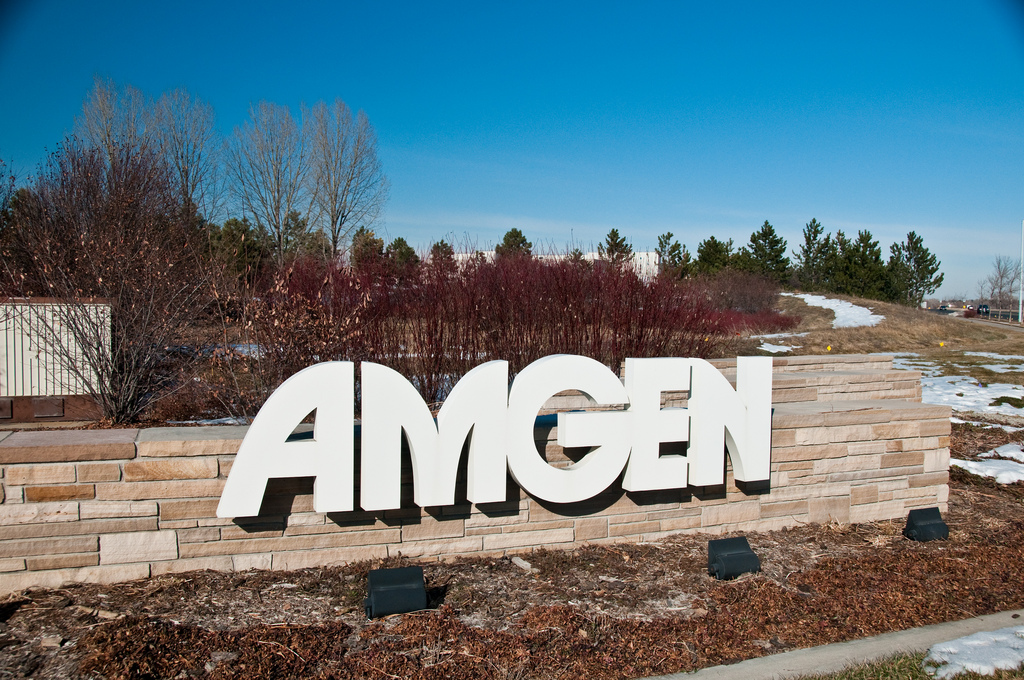
Amgen announced that the European Commission (EC) has approved an expanded indication for XGEVA (denosumab) for the prevention of skeletal-related events in adults with advanced malignancies involving bone. The indication now covers patients with bone metastases from solid tumors and those with multiple myeloma. The approval is based on data from the Phase 3 ‘482 study, the largest international trial ever conducted for the prevention of skeletal-related events in multiple myeloma patients.
“Many patients with multiple myeloma have bone lesions at diagnosis, which can result in serious and devastating complications, including broken bones, the need for surgery or radiation to the bone and spinal cord compression,” said David M. Reese, M.D., senior vice president of Translational Sciences and Oncology at Amgen. “Until now, treatment options for the prevention of bone complications were limited to bisphosphonates, which unlike XGEVA, are cleared by the kidneys and can be associated with increased renal toxicity. We are pleased with the expanded indication for XGEVA in Europe, underscoring our dedication to advancing care for patients with multiple myeloma.”
In the Phase 3 ‘482 study, XGEVA successfully met the primary endpoint, demonstrating non-inferiority to zoledronic acid in delaying the time to first on-study skeletal-related event in patients with multiple myeloma (HR=0.98, 95 percent CI: 0.85-1.14). The median time to first on-study skeletal-related event was 22.8 months for XGEVA and 24.0 months for zoledronic acid. The safety profile was consistent with known adverse events of XGEVA.
XGEVA is the first fully human monoclonal antibody that binds to and neutralizes RANK ligand (RANKL) – a protein essential for the formation, function and survival of osteoclasts, cells which break down bone – thereby inhibiting osteoclast-mediated bone destruction. On Jan. 5, 2018, the U.S. Food and Drug Administration approved the supplemental Biologics License Application for XGEVA to expand the currently approved indication for the prevention of skeletal-related events in patients with bone metastases from solid tumors to include patients with multiple myeloma. Additional regulatory applications for XGEVA for the prevention of skeletal-related events in patients with multiple myeloma are underway and have been submitted to health authorities worldwide.
Approval from the EC grants a centralized marketing authorization with unified labeling in the 28 countries that are members of the European Union (EU). Norway, Iceland and Liechtenstein, as members of the European Economic Area, will take corresponding decisions on the basis of the decision of the EC.
About ‘482 Study (NCT01345019)
The ‘482 study was an international, Phase 3, randomized, double-blind, multicenter trial of XGEVA compared with zoledronic acid in the prevention of skeletal-related events in adult patients with newly diagnosed multiple myeloma and bone disease. In the study, a total of 1,718 patients (859 on each arm) were randomized to receive either subcutaneous XGEVA 120 mg and intravenous placebo every four weeks, or intravenous zoledronic acid 4 mg (adjusted for renal function at baseline) and subcutaneous placebo every four weeks, plus investigators’ choice first-line antimyeloma therapy. Skeletal surveys using conventional radiography were obtained every 12 to 24 weeks per protocol. The primary endpoint of the study was non-inferiority of XGEVA versus zoledronic acid with respect to time to first on-study skeletal-related event (pathologic fracture, radiation to bone, surgery to bone or spinal cord compression).
Secondary endpoints included superiority of XGEVA versus zoledronic acid with respect to time to first on-study skeletal-related event and first-and-subsequent on-study skeletal-related event and evaluation of overall survival. Progression-free survival was a prespecified, exploratory endpoint and was not powered for statistical significance. The secondary endpoints, delaying time to first skeletal-related event and delaying time to first-and-subsequent skeletal-related events, did not demonstrate superiority. Overall survival was comparable between XGEVA and zoledronic acid, with a hazard ratio of 0.90 (95 percent CI: 0.70, 1.16). Median progression-free survival was 46.1 months (95 percent CI: 34.3 months, not estimable [NE], n=219) for XGEVA and 35.4 months (95 percent CI: 30.2 months, NE, n=260) for zoledronic acid.
The safety and tolerability of XGEVA were also compared with zoledronic acid. The safety profile was consistent with known adverse events of XGEVA. The most common adverse reactions (greater than or equal to 10 percent) were diarrhea, musculoskeletal pain, hypocalcaemia and dyspnea.
Filed Under: Drug Discovery




